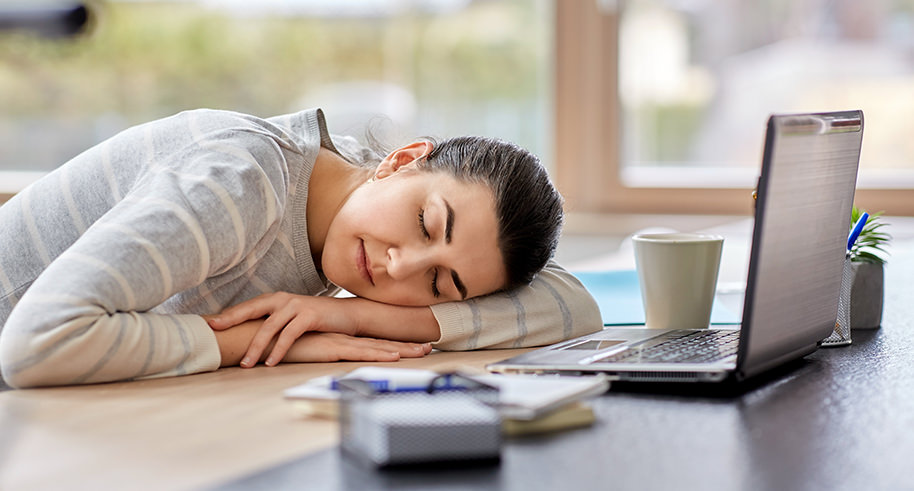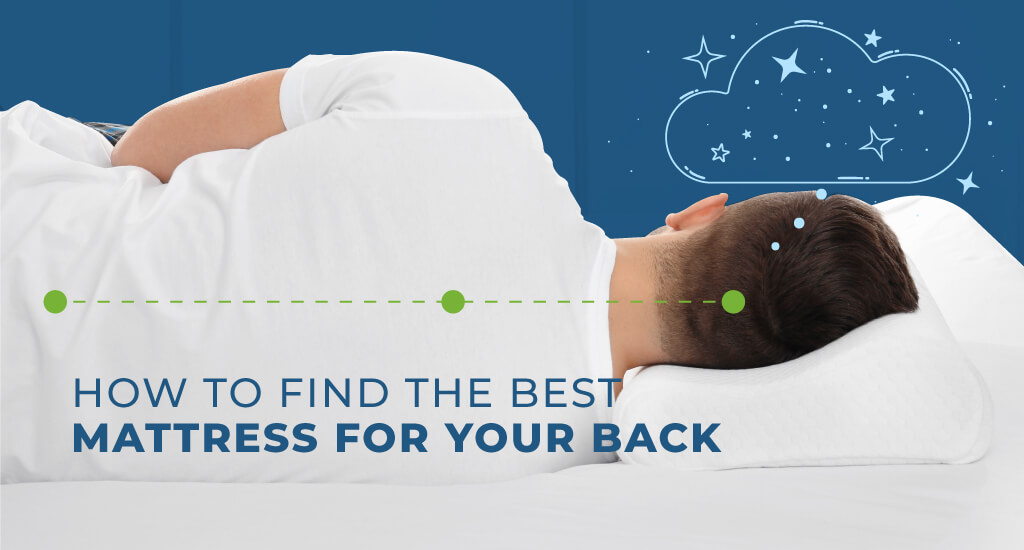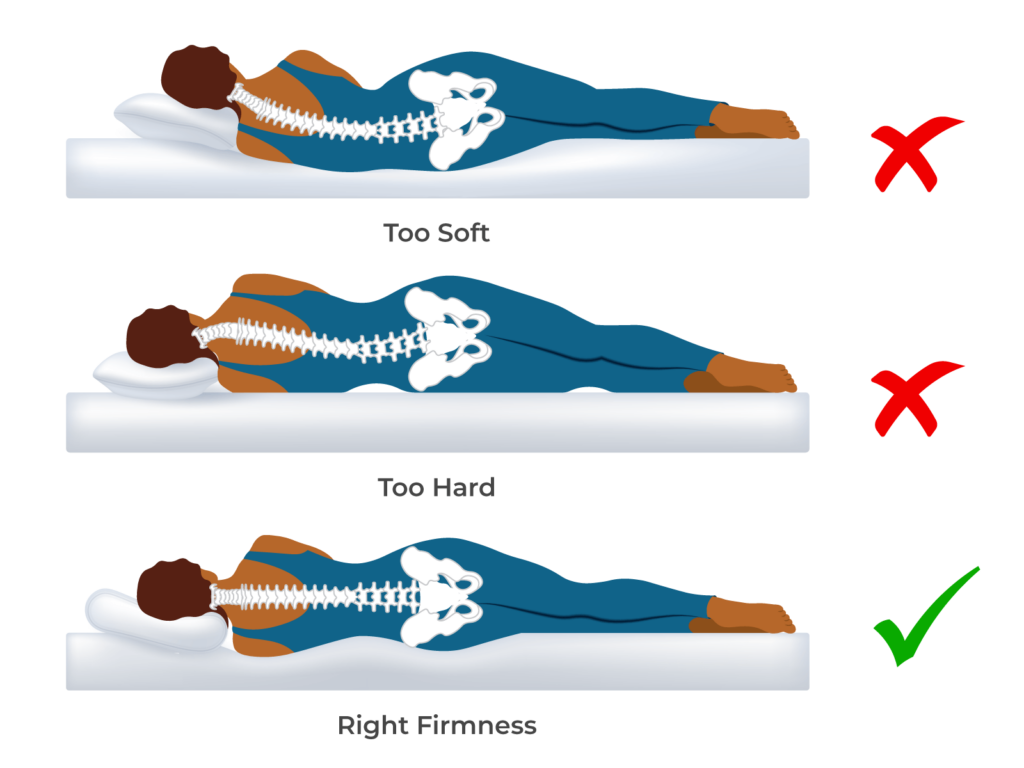
How Much Sleep Do I Really Need?
No doubt you’ve experienced an afternoon energy crash, uncontrollable yawning or the simple desire to close your eyes and rest. It may be hard to […]

Sick of tossing, turning, reconfiguring your partner, pet and 6 pillows just to get a little support for your aching back? It may be time for a new mattress. Finding the one that brings more sweet dreams (and less elbow jabs) is a wellness investment you won’t regret. After all, we spend almost a third of our lives in bed and need comfort and spinal support for (ideally) eight hours every night.
But what is the perfect mattress?
That depends on what type of sleeper you are. Few of us have GoldiLocks’ super-power of knowing which mattress is “just right” upon a momentary snuggle. In one study people slept in seven beds of varying firmness for a month but found no consensus on which was the best for back pain, neck pain and shoulder pain!
Whether you’re a “princess-who-can-feel-the-pea-under-10-mattresses” type sleeper or a “Sleepy the Dwarf” type sleeper who can grab zzzs anywhere (but has no idea what aches and pains await upon waking), sleep research has shown that a new mattress can improve sleep quality while reducing back pain, discomfort, and stress-related symptoms.
There is no doubt that adequate sleep plays a critical role in helping us reach our wellness goals. It reduces our risk of heart disease, lowers our blood pressure, regenerates our cells and muscular tissue and helps us process the day’s events.
If you’re sleeping on a mattress that offers nothing but aches and pains, it may be because it’s too old. A traditional innerspring mattress lasts 7 years on average; a memory foam mattress for up to 10 years; a latex mattress for up to 12 years.
You may also have chosen comfort over support. Lying on a mattress for 20 minutes in a store isn’t enough to know whether it will suit you — that takes an average of 30 nights. Choosing the right mattress requires understanding what your body type and optimal sleeping position require.
Whatever your unique needs, sleeping on an old mattress can:

Before you start Googling and mall hopping, make sure you’re shopping for these qualities in your next mattress:
To a large extent, your anatomy determines how your mattress impacts your spinal alignment. A pear-shaped side sleeper may need a softer mattress to accommodate the curviness, as may a back sleeper with a hyper- or hypo-lordotic lumbar curve. Both need extra support in the lumbar region but may not realize it before being examined and diagnosed by a reputable chiropractor.
Your preferred sleeping position affects how your weight is distributed across your body, joints, and mattress. You can alleviate back pain, neck pain, shoulder pain and body wide discomfort by choosing a firmness appropriate for your sleeping style:
Side Sleepers
Typically require a softer, plusher mattress that conforms to natural curves (especially hips and shoulders). It allows heavier areas to sink into the mattress, maintaining proper spine alignment while relieving stress on the body.
Back Sleepers
Slide your hand under the small of your back while lying down on a mattress (the curve of your lower back). The mattress may be overly firm if your hand readily glides under your lower back curve. The mattress is probably too soft if your hand doesn’t slide through at all.
Combination Sleepers
Sleep on both their back and their sides benefit from a mattress that’s not too firm and not too soft. A mattress that’s too firm causes excessive pressure on these areas and one that’s too soft allows the body to sink into bad postures. Medium firmness is best, however, one brand’s “firm” is another brand’s “medium firm,” so you’ll have to snuggle in and judge for yourself.
Stomach Sleepers
Should try to change their sleeping style. Sleeping on your stomach — especially if you already have back pain, neck pain, shoulder pain or joint issues — forces you to twist your neck and your head to the side so you can breathe, which can decrease your natural neck curvature, compressing one side of your neck while elongating the other. The torque this position applies to the spine can also cause lower back pain.
Before investing in a new mattress your spine will be relying on for potentially the next 10 years, observe and consider your body temperature. If you don’t sleep well when hot, or if you live in a warm climate (or extra warm bedroom) consider shopping for mattress made of breathable material like latex foam and hyper-elastic polymer.
Always check the manufacturer’s return policy so you can take your mattress for a test run that’s much longer than a showroom floor snooze. Try your bed for a month or however long the brand will allow, and if you discover it’s not improving your sleep or relieving your back pain, return it.
Now that you know how critical it is to match your mattress to your sleeping style, anatomy, and potential spinal misalignment, consider getting an evaluation from a reputable DC before starting to shop — discovering the state your spinal curvature may influence your decision.
Check in with your nearest Chiro One doc at one of our welcoming open-plan clinics across the country. They’ll perform a thorough exam to investigate the root cause of your pain, then personalize your care plan — a combination of gentle chiropractic adjustments and active therapies to help you feel better longer.
Find a Chiro One doctor near you
Help someone you love sleep more comfortably. Refer a friend or family member and they’ll receive a complimentary consultation – and you’ll receive a thank you gift from Chiro One.
Receive a thank you gift for referring them here.
Source:
Subscribe and get news, articles & offers sent right to your inbox each month.
"*" indicates required fields
By subscribing you are agreeing to the Terms and Conditions and Privacy Policy.